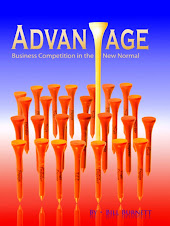As a consultant you are constantly selling yourself and your value. When you’re done with a client work session, you want your client to feel fulfilled. In fact, you want to be sure your client feels fulfilled. This is how we do it. (Thanks to authors Vern Harnish and Gino Wickman for the inspiration and insight.)
The method described below follows the Peak/End rule. The Peak/End rule is a great sales insight and is fully describe in my book The Peak Interview: “When people assess an experience that has a clear beginning and end, they attend to two things above all: how it felt at the peak, and whether it improved or worsened at the end. It is important to recognize that everything else isn’t forgotten, it just isn’t used in how the brain judges the quality of the experience.”
The work we do with clients involves a team. The team usually consists of the President/CEO and his or her management direct reports. Typically we spend the whole day with the team. The first time we do this is we spend a little time talking about being open and honest.
Then we ask them to rate their existing meetings on a scale of one to ten, with ten be best.
They each privately write down their rating of their normal meetings. We then go around the table (we never start with the CEO/President) and ask them to read what they wrote. The average score usually is between four and six.
Then we say we want them to have a ‘Rated 10™’ day today. We start every day with this stated desire from then on. We explain that at the end of the day we will go around the table as ask them for their rating of the day. They are not rating us. They are rating themselves. After all, they are the ones doing the work. We say we want them to have a Rated “Ten” Day, and that mean they each need to bring their ten-game to the table. “Do great work today,” we tell them.
Next, we explain in detail what we intend to do during the session today. Then, we go around the table and get the expectations from each team member. These we capture on a flip chart, one page for each participant. These are posted on the walls. If a team member has an expectation we don’t expect to deliver, we address it immediately, saying that we don’t think that will be done today and the team member agrees that we can remove it from the expectation list. Getting this right takes a bit of practice but it is essential that you’re able to deliver against every expectation.
At the end of the day we go around the table leaving the CEO/President for last, and go down the list of each participant’s expectations getting a “yes” from each person that the expectation was met. Sometimes there’s a discussion around the expectation and it does happen (although rarely) that we have to go back and spend a few minutes revisiting a part of the work to get it right.
Then we ask them to write down how they rate the meeting. We remind them that they are rating themselves for the work they’ve done today. You can also ask them to capture what they liked best, and one key insight they will use immediately going forward.
Then we go around the table asking them to tell us the rating they wrote down. For any rating less than a ‘ten’ ask why they didn’t give a ten and what would have caused them to rate it at a ten. By the time you get to the last person, the CEO/President, you’re likely to get at least an eight. Average the score. It is usually between eight and ten. Contrast that with how they rated their average meeting and challenge them to do better work when you next meet. End the meeting.
By going over expectations and rating the meeting you create a Peak End moment. You leave the client with the feeling of fulfillment. The chances of you continuing to work with them is high.






